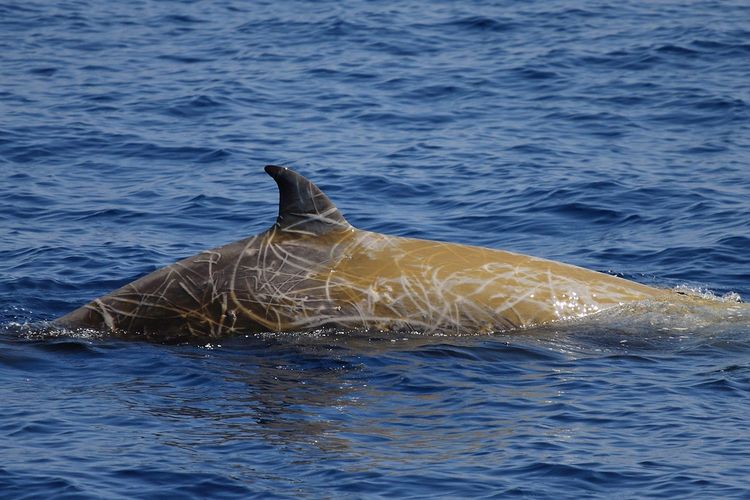
One Ocean Foundation, in collaboration with Milano-Bicocca University and the University of Insubria, has confirmed through an innovative approach that the Caprera Canyon is a biodiversity hotspot highly frequented by the Cuvier's beaked whale.
The data – recently published in the scientific journal Ecological Indicators – were collected using the environmental DNA technique, a non-invasive method that confirmed the recurring presence of this species in the area. “The identification of critical areas for species survival is essential for effective conservation of the marine environment,” explains Ginevra Boldrocchi, scientific coordinator of the project and a researcher at the University of Insubria. “And thanks to eDNA we were able to confirm the importance of the Canyon for this species.”
The species has been detected also in the areas of Castelsardo, Oristano and Orosei but not in Corsica, probably due to sampling being conducted too close to the coast for a deep-diving species. Yet, in other areas the species was detected also in coastal waters, especially towards the end of the summer. The authors speculate that occasional movements of the Cuvier's beaked whale towards coastal waters might occur and reflect the movements of their prey (such as squids), which only in autumn head to coastal areas.
The results of this study represent another important step toward the protection of this area, recently recognized as a Hope Spot by Mission Blue thanks to the research efforts carried out by the Foundation.
What is the environmental DNA
"Environmental DNA (also referred to as eDNA) consists of the DNA traces released into the surrounding environment by any living organisms" explains Elena Valsecchi, corresponding author of the study, who has developed the assay. It can be extracted from any environmental matrix, in this case in seawater samples. Its search through sophisticated molecular biology techniques makes it possible to implement traditional biomonitoring methods, especially for finding rare or elusive species. The principle is very simple: the detection of a species' DNAin certain location is the indicator of its presence in the surrounding area. "It is very difficult to establish exactly when and where the animal left its traces" add Dr Valsecchi "but considering that these molecular traces are very faint and tend to degrade rapidly and disperse with currents, we can assume that perceptible signals are fairly recent".
Thus eDNA then allows for a snapshot of the passage of different species in the area. Although it is affected by sea currents that may shuffle the tracks, this methodology compensates for the limitations of direct observation, allows for a non-invasive approach that does not stress the animal, and due to the simplicity of sampling it opens up the possibility of engaging “citizens” by involving them in research activities.
Cuvier's beaked whale's monitoring at Caprera Canyon
The Cuvier's beaked whale is a deep diver, capable of reaching great depths, over 2000 m, and diving up to a few hours. Spotting it is therefore very complex, especially in Caprera Canyon, which is 15-30 miles away from the coast (it is the largest submarine canyon system in this area reaching a depth of 1500 m) and is often subject to challenging weather and sea conditions for visual monitoring alone. It was precisely because of these difficulties that the use of environmental DNA was resorted to as a complementary technique to the monitoring already underway. It also provided the best natural scenario where testing the innovative approach, since the species is expected to be found in the area.
Environmental DNA monitoring was carried out at three different sites covering the entire length of the Canyon and at varying depths. In 2021, from May to October, environmental DNA samples were collected monthly at the three sites. The eighteen datasets were analyzed twice to obtain a double check, while a batch of samples collected in adjacent areas, served as a comparison.


